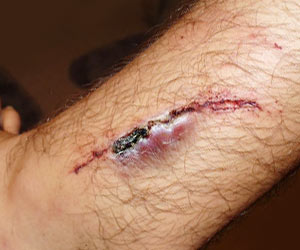Children who survive sepsis may show feeling effects on physical, social, emotional and school functioning for months after discharge from the hospital.

‘Survivors of sepsis often experience a long haul for recovery. Children could continue to feel the effects of sepsis on their physical, social, emotional and school functioning for months after they are discharged from the hospital.’





Researchers will present the abstract, "Illness Severity Associated with Deterioration of Health-Related Quality of Life Following Pediatric Sepsis" on Monday, May 8, at the Moscone West Convention Center.Lead author Elizabeth Killien, a pediatric critical care medicine fellow at the University of Washington School of Medicine, said that while it is increasingly rare for children to die from severe infections in the United States, the number of children experiencing sepsis actually is increasing.
"Although the number of children surviving sepsis is rising dramatically," Killien said, "we know very little about what happens to these children after they’re released from the hospital."
Reviewing electronic health records, the researchers identified 778 children admitted to Seattle Children’s Hospital between 2012 and 2015 who met the criteria for sepsis within four hours of arrival. They compared the patients’ reported, baseline health-related quality of life, a collection of factors that describe a child’s overall level of functional well-being, with similar measurements taken 2 weeks and 5 months after hospital discharge.
"What we found was that more than 23 percent, or nearly a quarter, of the patients hospitalized with sepsis have a significant decline in quality of life after hospitalization that can last several months after discharge," Killien said.
Advertisement
For example, fully 50 percent of patients who developed septic shock, in which blood pressure plunges and organ damage can occur, were still below their baseline functional health status nearly five months after discharge. An even higher amount (56 percent) of patients who had sepsis that involved infections in their blood also had failed to fully recover, as did 53 percent of those who had central nervous system infections.
Advertisement
"We’ve always focused on reducing deaths from pediatric sepsis, but it’s becoming increasingly clear that children who are surviving sepsis experience many lasting effects on their health and quality of life," she said. "Knowing that sepsis can have such a significant impact on children’s long-term well-being can help us better support them during and after a hospitalization to help improve outcomes among survivors."
Source-Eurekalert










